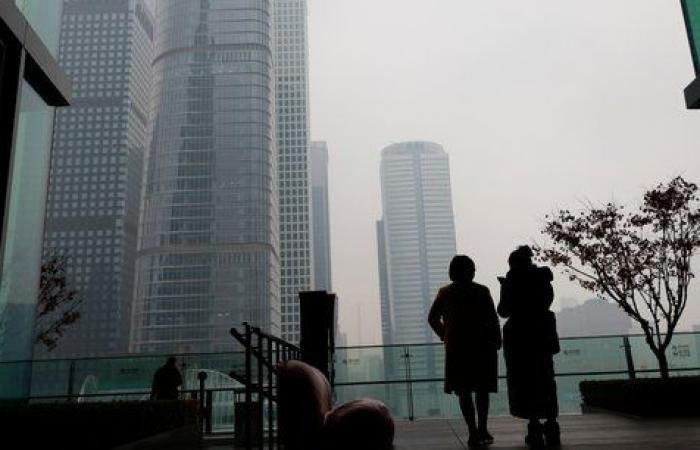In China, no major recovery plan is on the agenda. This was indicated by the governor of the Chinese central bank on Wednesday as the Asian giant’s economy is struggling. During a financial forum on Wednesday in Shanghai, Pan Gongsheng, on the contrary, pleaded for a certain monetary stability.
He thus specified that his institution “ will avoid major easing or tightening » of its monetary policy. Before completing: “ Maintaining price stability and promoting a moderate price recovery will be important considerations “, but ” we will flexibly use policy tools such as interest rates and reserve requirement ratios “.
Chinese electric cars: is the increase in customs duties really applicable?
China has struggled to revive its economy since the strict health measures in place during the Covid pandemic were lifted at the end of 2022. The authorities have increased measures to support the private sector, infrastructure construction and consumption. But they have not launched a major recovery plan.
“ China’s economy continues to recover and improve, but still faces some challenges », further indicated Pan Gongsheng.
“ The main ones are insufficient demand (…), as well as the increasing complexity, severity and uncertainty of the external environment “, he stressed.
Electric cars: would France be more competitive with China if Europe raised its customs duties?
A gloomy economic context
Several reasons explain the gloomy economic context in China. Among them: the real estate market, which constitutes one of the main obstacles to recovery. This sector has long represented a quarter of Chinese GDP in the broad sense and served as a driving force in many other areas.
It is now moribund, which translates into unfinished housing and distrust of many developers on the verge of bankruptcy. While the purchase of property has long been perceived by the Chinese as a safe investment, the real estate crisis has called everything into question and the fall in prices per square meter is a hard blow for household wallets.
Since last year, China has stepped up measures to try to revive its real estate sector. In vain, for the moment. In May, it also reduced the minimum contribution for first-time buyers and proposed the repurchase of unoccupied housing by local authorities, with mixed results.
Faced with the desire of those in power to deflate a bubble which has exploded the debt of many private developers, some are now fighting for their survival, like Evergrande. The price of new housing is expected to fall further this year by 15 to 20%, warns the Fitch rating agency.
Youth unemployment, the thorn in the government’s side
Another burning issue on the table: youth unemployment. President Xi Jinping called in May to make this issue the “ top priority ». The rate reached record highs last year, before the authorities suspended the publication of the figures, officially to review their methodology. This month again, 11.8 million students will leave university.
One of the main explanations for this mass unemployment comes from the rapid development, due to a lack of strict regulation, of dynamic sectors such as the internet. Now that they are more supervised, significant employment pools are shrinking against a backdrop of declining profitability, including the digital giants Alibaba, Tencent and ByteDance.
Chinese electric cars: is the increase in customs duties really applicable?
Depressed growth
For their part, exports come up against geopolitical tensions between Beijing and Washington and the desire of certain countries to diversify their production chain. This sector is historically an important lever of growth for China and its performance has a direct impact on employment for thousands of companies.
The more recent rise in tensions on the commercial level between Europe and China does not tend to help the situation. The European Union said last week it would impose up to 38% additional tariffs on imports of Chinese electric vehicles starting next month. In response, Beijing announced on Monday the opening of an anti-dumping investigation into imports of European pork. The threat of a trade war increasingly hangs over the two great powers.
Increase in customs duties: China counterattacks and opens anti-dumping investigation into European pork imports
Despite all these problems, the Chinese government is targeting around 5% growth this year. This rate would make many countries dream, but for China it remains a long way from the meteoric expansion that has propelled it to the top of the world economy in recent decades.
An objective also considered ambitious by many economists. Especially since China recorded one of its lowest growth rates in decades last year (5.2%). But the International Monetary Fund (IMF) said at the end of May that it was more optimistic than expected for Chinese growth this year, while warning of the challenges that remain on the industrial and budgetary levels.
(With AFP)






